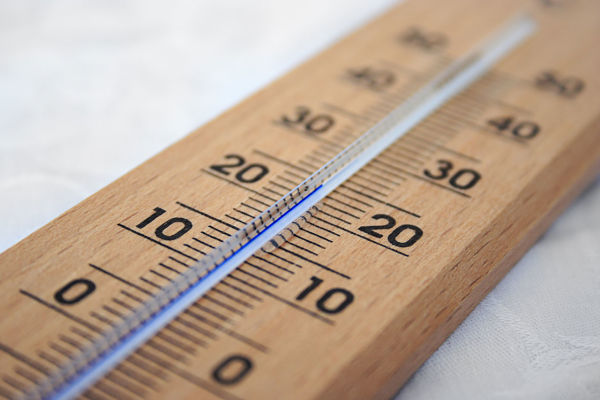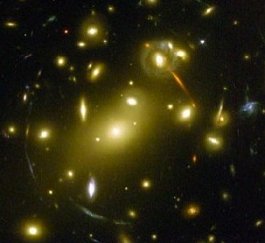Thermodynamics
Article curated by Grace Mason-Jarrett
Energy can neither be created nor destroyed; it can only be changed from one form to another.
– Albert Einstein
Thermodynamics, the study of energy, explains phenomena from why ice floats on water to why wearing black makes you warmer. It tells us about state (or phase), and has allowed us to discover exceptional states like plasmas and supercooled liquids. The realm of materials science, thermodynamics explains the everyday – and introduces some weird and wonderful paradoxes.

There are four laws of thermodynamics and, together, these help us understand the way temperature and energy behave from chemical reactions to the formation of the universe – but we can’t prove the laws true. They could be fundamental underlying truths, or only one of many possible models to explain our observations of the universe – we don't know. Scientists rely on the laws simply because of their amazing predictive power!
Learn more about /Entropy.


Scientists use thermodynamics every day to inform decisions. For example, the first law of thermodynamics tells us that 100% efficiency is impossible: some energy is always lost. Indeed, scientists have found that the maximum, hypothetically obtainable, efficiency for a solar panel that can track the sun is 85% and for one that doesn't – 55% (so, for an overcast day, 55% for a tracking solar panel too). This means that at 35%, we're still a way off what is achievable, but how are we going to solve this?

Kauzmann's Paradox
Kauzmann's Paradox relates to glassy materials, and describes the point when they break the laws of thermodynamics.
You may have heard that glass is actually a liquid – it just moves really slowly. In fact, Tudor windows are thicker at the bottom not because glass flows, but because they were made unevenly and they chose to put the heavier ends at the bottom. But there is some truth in the myth: glasses are materials formed by a liquid becoming more and more viscous until it appears to be solid... without changes in bonding. This is different to other liquid-solid phase changes, for example water to ice, where the physical structure of the material changes. The glass transition, as it is known, is a reversible process!
The third law of thermodynamics states that at absolute zero (-273 degrees Celsius) the entropy (or disorder) of a system is zero and the material is now in a perfectly ordered crystal state. Entropy decreases as temperature decreases. Except this creates Kauzmann’s Paradox...
At the glass transition temperature, the entropy difference between solid and liquid is zero, as they are basically the same… so in theory, you could supercool the liquid, the entropy difference would eventually become negative! This is unreasonable, because it would mean the liquid was more organised than the solid, state, then liquids, then gases.">opposite to their definitions! Despite there being several strong ideas about what’s going on here, scientists cannot agree on the cause of such defiance and so the paradox remains a mystery[1].
Learn more about /Entropy.

 2
2
Negative thermal expansion
Some materials exhibit negative thermal expansion and/or negative compressibility – contracting upon heating and expanding upon cooling, or expanding under pressure and contracting when pressure is reduced. Negative thermal expansion materials are important in engineering photonics, electronics and structures, such as for the formation of composite materials like tooth filling that have the same expansion properties as tooth enamel. However, these backwards bulk material properties contradict established thermodynamic theory and scientists want to know more...
Recent work shows that small amounts of material at high pressure might exist with a higher entropy than the rest of the material, and maybe this affects it overall.
Learn more about /Entropy.


 2
2The Mpemba Effect

Learn more about The Mpemba Effect.

 2
2Freezing
It seems that, despite years of work on water, hydrogen bonding, and water clusters, no one has quite yet managed to answer the question: why is water most dense at 4oC exactly? Models are yet to explain!
Learn more about Why is water most dense at 4 degrees Celsius?.

 2
2
Water isn't the only liquid whose freezing behaviour is confusing. Surface freezing is an uncommon phenomenon where long-range crystalline order appears in a substance first near the surface of a liquid. It has only been experimentally found in chain molecules like alkanes. Furthermore, in intermediate chain length alkanes (16 to 50 carbon atoms) this happens at a temperature 3oC higher than the equilibrium melting temperature, where an "infinite stack of crystals" melts. There is no consensus yet on why only chain molecules should show surface freezing, and why the length of the alkane chain should show this disparity is anyone's guess.

Ostwald's rule


Quantum memory materials
When we mix hot and cold water, through the processes of thermodynamics, we end up with warm water. But this is not the case when it comes to crystals discovered in 2015: made of ultracold atoms trapped in light crystals, these materials show weird quantum effects and have been dubbed a novel state of matter. The atoms always stay below the temperature of the surrounding environment (or are permanently insulated), retaining a quantum “memory” of its initial state. Scientists are investigating how vibrations affect them[2].

Planets
Planets should settle down into a state of thermal equilibrium, whereby the total energy they emit into space matches the energy being absorbed from the sun. Anything else means either the planet's temperature rapidly spirals up or down... However, it seems the gas giants Jupiter, Saturn and Neptune don't want to obey this particular law, since they all emit more heat than they receive – which means they must have some form of internal heat source (or thermodynamics is broken). The emitted thermal energy exceeds the absorbed solar energy by 57%, 80%, and 157% for Jupiter, Saturn, and Neptune, respectively [3][4][5] – an impressive feat! We don't know what this heat source could be, though scientists have suggested a "georeactor" – nuclear reactions in the core of the planet! We know that the Earth, in its past, has had such reactors within it!
Learn more about Energy imbalance of the giant planets.


 3
3
Gravity
Is there a link between gravity and thermodynamics? The equations are excitingly symmetric, leading scientists to speculate. However, there is no observational evidence nor theoretical explanation for this symmetry... gravity and thermodynamics just look suspiciously alike!
The universal nature of gravity is also demonstrated by the fact that its basic equations closely resemble the laws of thermodynamics and hydrodynamics
– Erik Verlinde[6]
Learn more about Gravity and Thermodynamics.

 2
2


 3
3This article was written by the Things We Don’t Know editorial team, with contributions from Ed Trollope, Freya Leask, Kat Day, Rowena Fletcher-Wood, and Holly Godwin.
This article was first published on 2015-08-27 and was last updated on 2020-07-30.
References
why don’t all references have links?
[1] Speedy, Robin J. Kauzmann's paradox and the glass transition. Biophysical chemistry 105.2-3 (2003): 411-420 doi: 10.1016/S0301-4622(03)00105-4.
[2] Schreiber, M., et al., (2015) Observation of many-body localization of interacting fermions in a quasirandom optical lattice Science 349(6250):842-845 DOI: 10.1126/science.aaa7432
[3] Li, L., et al., (2011) The global energy balance of Titan Geophysical Research Letters 38:L23201 DOI: 10.1029/2011GL050053
[4] Conrath, B. J., R. A. Hanel, and R. E. Samuelson (1989), Thermal structure and heat balance of the outer planets, in Origin and Evolution of Planetary and Satellite Atmospheres, edited by S. K. Atreya, J. B. Pollack, and M. S. Matthews, pp. 513–538, Univ. of Ariz. Press, Tucson.
[5] Ingersoll, A. P., (1990) Atmospheric dynamics of the outer planets. Science 248:308-315 DOI: 10.1126/science.248.4953.308
[6] Verlinde, E., (2011) On the origin of gravity and the laws of Newton Journal of High Energy Physics 2011:29 DOI: 10.1007/JHEP04(2011)029
Blog posts about thermodynamics


Recent thermodynamics News
Get customised news updates on your homepage by subscribing to articles














